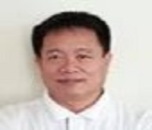5506
Scientific Program

George R. Puno
Forestry And Environmental Science, Central Mindanao University
Title: Assessment of Solid Waste Generation and Management at the Local Level
Biography:
George R. Puno is a faculty of the College of Forestry and Environmental Science, Central Mindanao University, Philippines. He is a concurrent, Head, Planning Unit of the Geomatics Center for Research and Extension in Mindanao (GeoMin), CMU. He obtained his Doctor of Philosophy in Forestry at the University of the Philippines Los Baños. His field of specialization includes among others Geographic Information System (GIS), watershed management, and modeling and disaster management. He serves as Project Leader in several research projects such as the Flood Hazard Mapping using Light Detection and Ranging (Phil-LiDAR 1) for Northern Mindanao and the GeoSafer Mindanao or the Geo-Informatics for the Systematic Assessment of Flood Effects and Risks for a Resilient Mindanao. He has published peer-reviewed scientific articles, both national and international
Abstract
Statement of the Problem: Solid waste generation has been a pressing concern to environmental and health issues of the present time. It accumulates at a rate that exceeds the natural environment absorption capacity and the treatment available both at the national and local level. The ever increasing varieties and quantities of solid wastes generated for years remains a problem. Solid waste management in the Philippines at the local level scenario seems to be the less priority rendered services due to lack of scientific protocols and outdated facility system. While the national government mandates the local authorities to implement sanitary landfills through Republic Act 9003, the compliance as legally prescribed with the minimum standards remains low as seen in most landfills. The purpose of this paper is to assess the status of the solid waste generation rate and management strategies of the country at the local scenario. Methodology & Theoretical Orientation: The main approach included qualitative case-study of local solid waste management that allows inductive self-administered questionnaire and ocular observation. Secondary data was extracted from the local solid waste management 10-year management plan. Two questionnaires were designed namely self-constructed and validated adapted from the World Health Organization-Guides for Municipal Solid Waste Management in Pacific Countries. Findings: The major contributor of the waste generation in the locality are industrial, commercial, and institutional establishments with 85% biodegradable. Based on waste generated of 0.29 kg/capita and an annual population increase of 2.48%, the waste generation rate was projected to increase by roughly 27% in 2024. Conclusion & Significance: The solid waste disposal strategy of the locality has to follow a science-based protocol through appropriate sanitary landfill management to address environmental and health issues and concerns. Fortunately, the locality is on the right track in its solid waste management system provided that it ensures the implementation of its approved solid waste management plan. Waste utilization through appropriate recycling will reduce the waste disposal up to 70-90 %.
- Climate changes
- E-waste recycling and management
- Waste water recycling
- Zero Waste
- Biogas production
- Solid waste management

